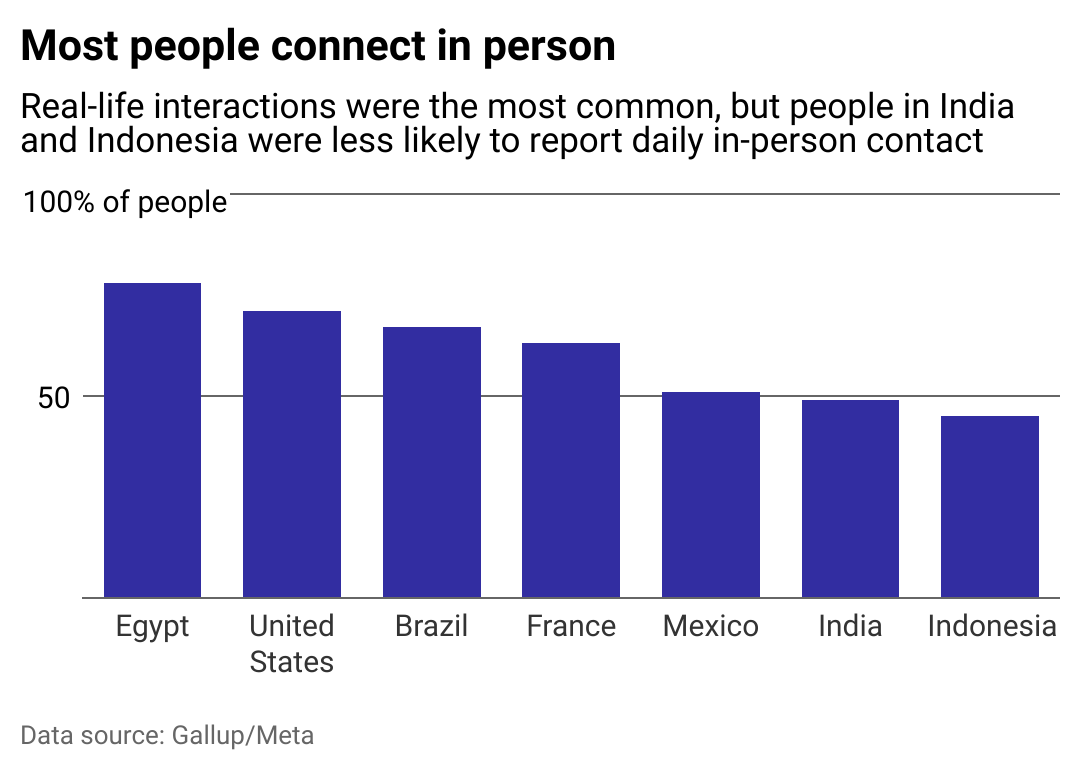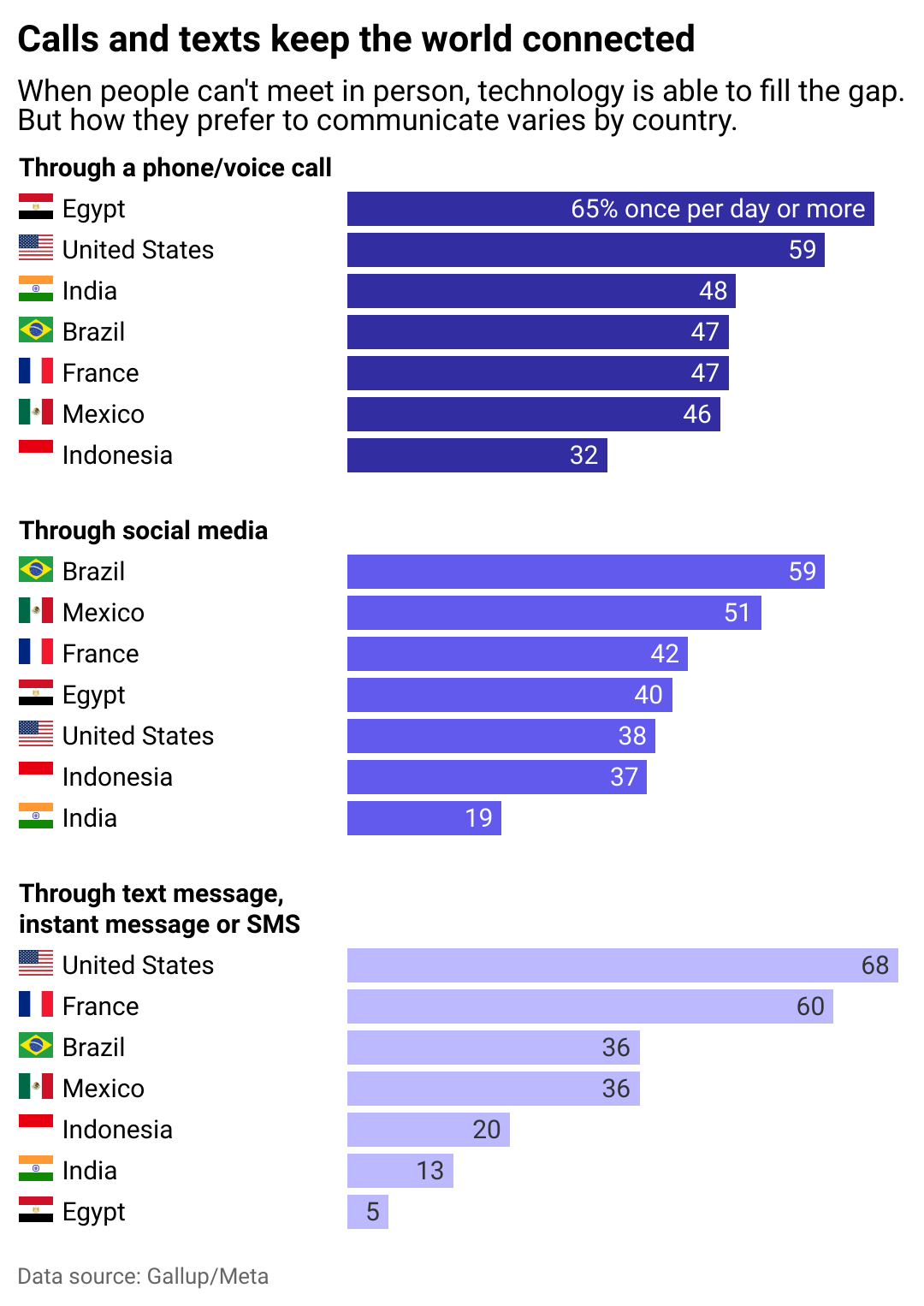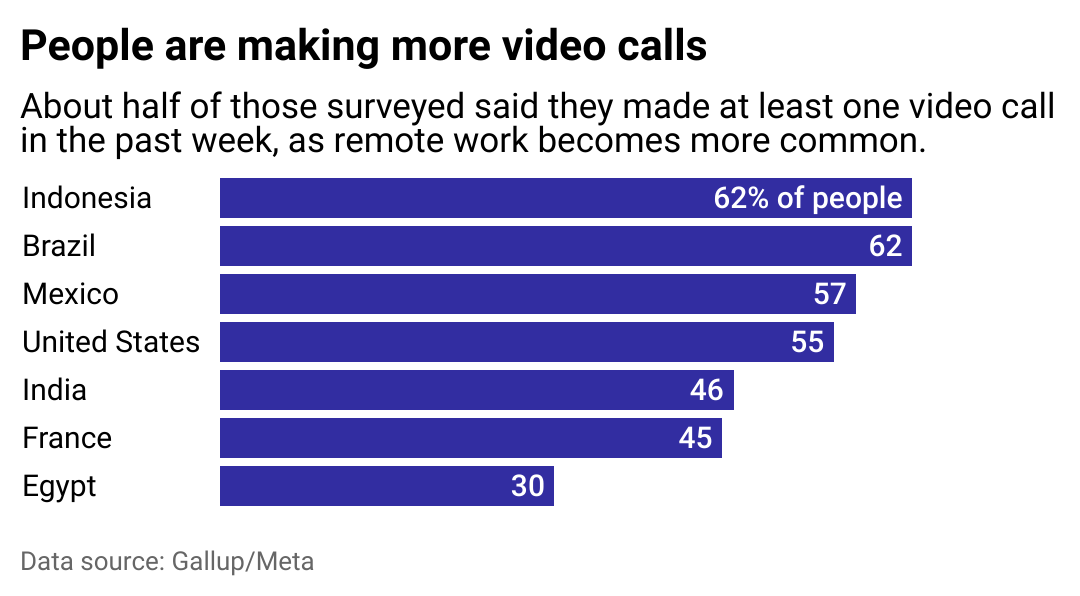Clear, 55° F
Connecting with friends, family, co-workers, and even acquaintances does more than boost our mental health. It's a vital part of maintaining our physical wellness, too.
The absence of regular social interaction can directly weaken the body's response to viruses and pathogens, impact metabolic regulation, and damage other immune system functionality. Isolation can also lead to increased anxiety, depression, and low self-esteem. Poor social relationships were even found to increase a person's risk of coronary heart disease by 29% and stroke by 32%, according to a study published in 2016.
Internet access helped bridge loneliness during the peak of the COVID-19 pandemic, according to research from East Carolina University. Consequently, those lacking such access—more prevalent among Black Americans, people with chronic health conditions, and those earning less than $25,000 a year—experienced higher rates of loneliness during the pandemic.
Spokeo examined Meta and Gallup's 2022 State of Social Connections study to see how humans connect around the world. The survey, which was administered between April and June 2022, measured social connections across seven countries: Brazil, Egypt, France, India, Indonesia, Mexico, and the United States. This includes any form of social interaction, including between friends, family, business associates, and even with strangers in public.

Countries with the lowest amount of daily in-person contact, including India and Indonesia, are among those in the Asia-Pacific region embracing global remote work. Within the region, India leads in terms of remote hiring. Meanwhile, Indonesia is one of around 60 countries that offers "digital nomad" visas in an effort to attract more remote workers to its shores.

Across cultures, communication methods and practices vary tremendously. People in Egypt are the most likely among countries surveyed to make phone or voice calls, but 2 in 5 also communicate through social media every day. Egyptian citizens are the least likely among the surveyed countries to use SMS or text messaging.
By contrast, most French and American citizens favor text messaging but commonly interact using other forms of communication, such as phone or voice calls and social media.
With the largest share of Latin American internet users, people in Brazil prefer communicating over social media apps—and use instant messengers more than any other type of social media platform.

The convenience of video conferencing in business is unmatched, so it comes as no surprise that it is growing globally—and especially so in countries that outsource business processes or embrace remote work. By the end of 2027, the global video conferencing market is projected to reach $19.1 billion, up from $10.6 billion in 2022. As it stands now, Indonesia tops the list in both video call frequency and duration: a report by MarketsandMarkets found that Indonesian citizens make video calls that are 10% longer than the global average.
A 2024 study from Research and Markets found that the video conferencing industry is poised to reach $22.21 billion by 2030. Growth in the rapidly evolving market is being fueled by ongoing remote work trends and cutting-edge advancements in tech, among other factors.
Story editing by Jeff Inglis and Alizah Salario. Additional editing by Kelly Glass. Copy editing by Tim Bruns.
This story originally appeared on Spokeo and was produced and distributed in partnership with Stacker Studio.